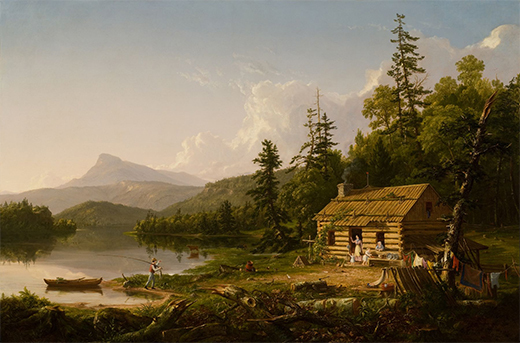| << Chapter < Page | Chapter >> Page > |

A native of Vermont, Gershom Flagg was one of thousands of New Englanders who caught “Ohio fever.” In this letter to his brother, Azariah Flagg, dated August 3, 1817, he describes the hustle and bustle of the emerging commercial town of Cincinnati.
DEAR BROTHER,
Cincinnati is an incorporated City. It contained in 1815, 1,100 buildings of different descriptions among which are above 20 of Stone 250 of brick&800 of Wood. The population in 1815 was 6,500. There are about 60 Mercantile stores several of which are wholesale. Here are a great share of Mechanics of all kinds.
Here is one Woolen Factory four Cotton factories but not now in operation. A most stupendously large building of Stone is likewise erected immediately on the bank of the River for a steam Mill. It is nine stories high at the Waters edge&is 87 by 62 feet. It drives four pair of Stones besides various other Machinery as Wool carding&c&c. There is also a valuable Steam Saw Mill driving four saws also an inclined Wheel ox Saw Mill with two saws, one Glass Factory. The town is Rapidly increasing in Wealth&population. Here is a Branch of the United States Bank and three other banks&two Printing offices. The country around is rich. . . .
That you may all be prospered in the world is the anxious wish of your affectionate Brother
GERSHOM FLAGG
What caught Flagg’s attention? From your reading of this letter and study of the engraving below ( [link] ), what impression can you take away of Cincinnati in 1817?

Learn more about settlement of and immigration to the Northwest Territory by exploring the National Park Service’s Historic Resource Study related to the Lincoln Boyhood National Memorial. According to the guide’s maps, what lands were available for purchase?
The first major economic crisis in the United States after the War of 1812 was due, in large measure, to factors in the larger Atlantic economy. It was made worse, however, by land speculation and poor banking practices at home. British textile mills voraciously consumed American cotton, and the devastation of the Napoleonic Wars made Europe reliant on other American agricultural commodities such as wheat. This drove up both the price of American agricultural products and the value of the land on which staples such as cotton, wheat, corn, and tobacco were grown.
Many Americans were struck with “ land fever .” Farmers strove to expand their acreage, and those who lived in areas where unoccupied land was scarce sought holdings in the West. They needed money to purchase this land, however. Small merchants and factory owners, hoping to take advantage of this boom time, also sought to borrow money to expand their businesses. When existing banks refused to lend money to small farmers and others without a credit history, state legislatures chartered new banks to meet the demand. In one legislative session, Kentucky chartered forty-six. As loans increased, paper money from new state banks flooded the country, creating inflation that drove the price of land and goods still higher. This, in turn, encouraged even more people to borrow money with which to purchase land or to expand or start their own businesses. Speculators took advantage of this boom in the sale of land by purchasing property not to live on, but to buy cheaply and resell at exorbitant prices.

Notification Switch
Would you like to follow the 'U.s. history' conversation and receive update notifications?